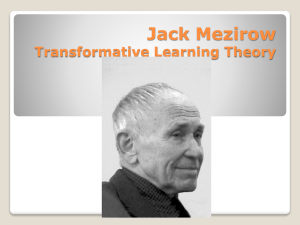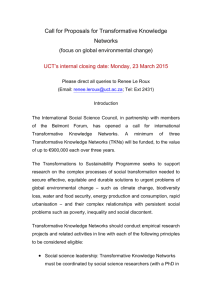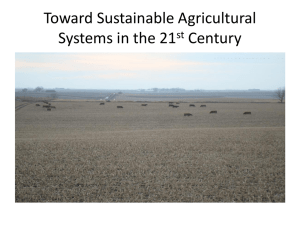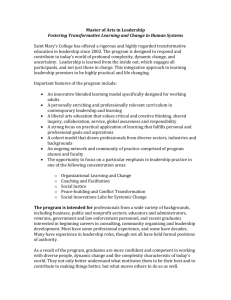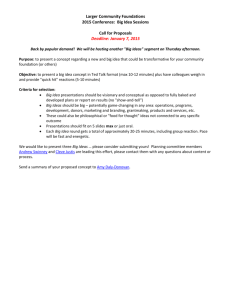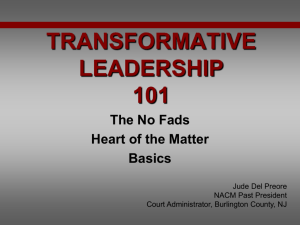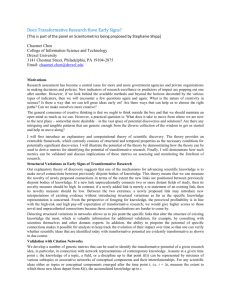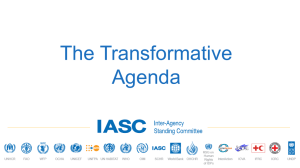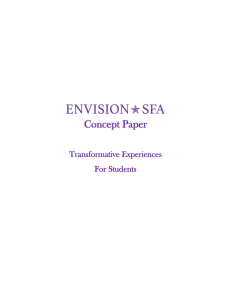Transformation Through Crisis: Finding
advertisement
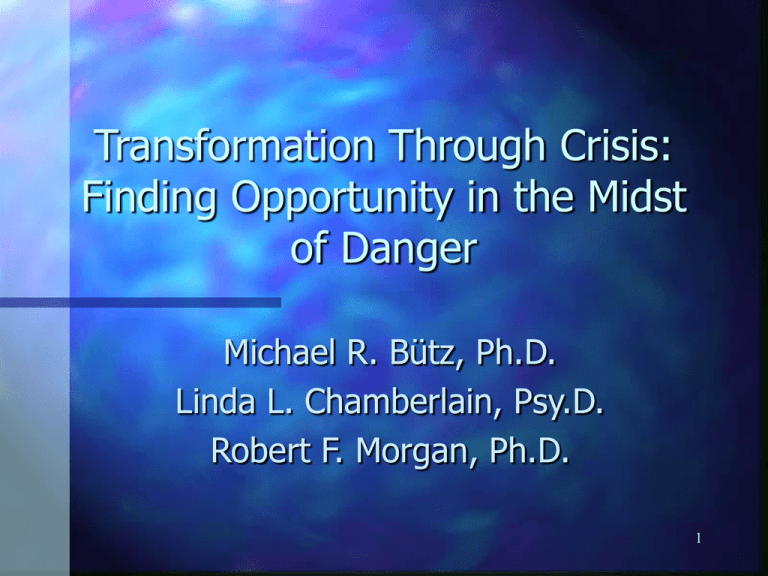
Transformation Through Crisis: Finding Opportunity in the Midst of Danger Michael R. Bütz, Ph.D. Linda L. Chamberlain, Psy.D. Robert F. Morgan, Ph.D. 1 The Handouts… www.aspenpractice.net 2 Setting The Context… “A mind that is stretched by a new experience can never go back to its old dimensions…” Oliver Wendell Holmes 3 Setting The Context… “The place of my origin had changed, and having gone away I had not changed with it. In my memory it stood as it once did and its outward appearance confused and angered me. When I went away I had died, and so became fixed and unchangeable…” 4 Setting The Context… “…My return caused only confusion and uneasiness. Tom Wolfe was right. You can't go home again because home has ceased to exist except in the mothballs of memory…” John Steinbeck 5 Setting The Context… “The significance of a crisis is in its temporal telescoping of development. Major alterations in pattern may occur in a relatively short period and may subsequently remain stable for a long time.” Gerald Caplan 6 So, Why Crisis? • In essence, it is the seed from which all developmental processes unfold, • And, crises are markers in time, a representative embodiment of all significant change processes… 7 Transformation Through Crisis: Finding Opportunity in the Midst of Danger Michael R. Bütz, Ph.D. 8 What Got This Started..? “…will one day make a systematic study of the unfolding of the significant ideas in this transitional period, assuming that events confirm our prediction that we are witnessing the beginning of a metamorphosis…” Gerald Caplan, 1964 9 What Got This Started..? • Most common crisis descriptors inappropriately continue to focus on: • Homeostasis, • Equilibrium, • And, static developmental notions of crises… 10 What Got This Started..? • Besides, it’s the Big Picture… • Crisis Theory truly belongs to no one discipline, theoretical perspective, modality of treatment or model of care. • Moreover, Crisis Theory applies regardless of the point of service; that is to say the individual, couple, family, community or even nation. 11 Wrangling with Linearity • Despite years of literature on this topic, forty plus, there is the pervasive belief that: • Stresses or emergencies are causally linked to interpersonal crises… • And, then there’s the pervasive sentiment I’ve eloquently termed: The whole avoid the “crisis experience” deal… 12 The Up Side •The field, simultaneously, also acknowledges that crises are: •Multi-determined •Present unique opportunities for individuals, families, communities and larger social systems… 13 The Up Side • In fact, ‘most’ mainstream crisis theorists acknowledge this, and use this symbol as a central theme: •Aguilera, Gilliland and James, and Hoff. • And, make use of this Chinese symbol to represent the phenomenon of crisis, that while there is “danger,” there is “opportunity” for adaptation and growth. 14 Theory ≠ Ordinary language… 15 Theory ≠ Ordinary language… “Mathematics essentially means the existence of an algorithm which is much more precise than that of ordinary language. History of science attests that expression in ordinary language often preceded mathematical formulation, i.e. invention of an algorithm.” von Bertalanffy, 1968 16 Theory ≠ Ordinary language… “The normal consistency of pattern, or equilibrium, is maintained by homeostatic re-equilibrating mechanisms, so that temporary deviations from the pattern call into operation opposing forces which automatically bring the pattern back to its previous state.” Caplan, 1964 17 Common Sense • “Natural systems collect information over time that is stored and exerts an effect on both their current and future activity. Therefore, it is impossible in a natural system to ‘start over again’ or return to a baseline. Time cannot be reversed, nor can the inevitable changes that occur over time be undone.” Chamberlain (1995) • “It’s essentially meaningless to talk about a complex adaptive system being in equilibrium: the system can never get there. It is always unfolding, always in transition. In fact, if the system ever does reach equilibrium, it isn’t stable. It’s dead.” Waldrop (1992) 18 Common Sense 19 Theory = Common Sense • Arrow of Time – Time is a one way ticket, therefore so is development.. • Cybernetics – Feedback is important… • General Systems Theory – Open systems adapt… • Nonlinear Dynamics – Change occurs in unexpected ways and based on previous patterns… 20 Transformative Crisis Intervention • Always working toward transformation fully considering the coherence and energy of the individual or system, • Honoring the behavioral health and nonlinear dynamics literature that has been laid down before, incorporating a “lessons learned” stance given current vernacular, 21 Transformative Crisis Intervention •And focusing on a growth model, acknowledging that development may be represented by a variety of “psychiatric-appearing” states, such as an anxiety, depression, disorientation, and periodic regressions. 22 Transformative Crisis Intervention • Terminology • Dynamic Steady States both honors von Bertalanffy’s contribution to the field, as well as describes the ‘dynamic’ nature of a stable state informed by nonlinear dynamics in a developmental framework. • Transformative States is also a required introduction, not explicitly described in earlier GST, and more fully describes unstable states with cybernetic properties, bifurcation cascades, complexity and chaos as transformative processes. 23 Transformative Crisis Intervention • A Constant Striving – No Matter What… • Another premise here is that whether or not it is evident, that individuals or systems are constantly striving to adapt - regardless of whether or not they are successfully adapting. • When systems lack either coherence or energy, or both, they may exist in a phase of development in which they toil at the edge of complexity without adequate transformative resources to make use of complexity, no less, chaos, as a transformative process. 24 Transformative Crisis Intervention • A Constant Striving – No Matter What… • Resource Structural Maladaptations describes this process, wherein the system lacks the metabolic and structural properties that would enable it to continue on its developmental path . • Resource Structural Maladaptations may also be may also be viewed as somewhat dangerous if left to cycle too long, akin to a kayaker being caught in what is termed colloquially as a ‘keeper-hole,’ as the system may begin to run out of energy and call upon its own structure, physical or psychological, to maintain it... 25 Transformative Crisis Intervention • The Process Represented, & 2006… 26

